-
BackX
-
Components
-
-
Category
-
Semiconductors
- Diodes
- Thyristors
-
Electro-insulated Modules
- Electro-insulated Modules | VISHAY (IR)
- Electro-insulated Modules | INFINEON (EUPEC)
- Electro-insulated Modules | Semikron
- Electro-insulated Modules | POWEREX
- Electro-insulated Modules | IXYS
- Electro-insulated Modules | POSEICO
- Electro-insulated Modules | ABB
- Electro-insulated Modules | TECHSEM
- Go to the subcategory
- Bridge Rectifiers
-
Transistors
- Transistors | GeneSiC
- SiC MOSFET Modules | Mitsubishi
- SiC MOSFET Modules | STARPOWER
- Module SiC MOSFET ABB’s
- IGBT Modules | MITSUBISHI
- Transistor Modules | MITSUBISHI
- MOSFET Modules | MITSUBISHI
- Transistor Modules | ABB
- IGBT Modules | POWEREX
- IGBT Modules | INFINEON (EUPEC)
- Silicon Carbide (SiC) semiconductor elements
- Go to the subcategory
- Gate Drivers
- Power Blocks
- Go to the subcategory
- Electrical Transducers
-
Passive components (capacitors, resistors, fuses, filters)
- Resistors
-
Fuses
- Miniature Fuses for electronic circuits - ABC & AGC Series
- Tubular Fast-acting Fuses
- Time-delay Fuse Links with GL/GG & AM characteristics
- Ultrafast Fuse Links
- Fast-acting Fuses (British & American standard)
- Fast-acting Fuses (European standard)
- Traction Fuses
- High-voltage Fuse Links
- Go to the subcategory
- Capacitors
- EMI Filters
- Supercapacitors
- Power surge protection
- TEMPEST emission revealing filters
- Surge arrester
- Go to the subcategory
-
Relays and Contactors
- Relays and Contactors - Theory
- 3-Phase AC Semiconductor Relays
- DC Semiconductor Relays
- Controllers, Control Systems and Accessories
- Soft Starters and Reversible Relays
- Electromechanical Relays
- Contactors
- Rotary Switches
-
Single-Phase AC Semiconductor Relays
- AC ONE PHASE RELAYS 1 series| D2425 | D2450
- One phase semiconductor AC relays CWA and CWD series
- One phase semiconductor AC relays CMRA and CMRD series
- One phase semiconductor AC relays - PS series
- Double and quadruple semiconductor AC relays - D24 D, TD24 Q, H12D48 D series
- One phase semiconductor relays - gn series
- Ckr series single phase solid state relays
- One phase AC semiconductor relays for DIN bus - ERDA I ERAA series
- 150A AC single phase relays
- Rail Mountable Solid State Relays With Integrated Heat Sink - ENDA, ERDA1 / ERAA1 series
- Go to the subcategory
- Single-Phase AC Semiconductor Relays for PCBs
- Interface Relays
- Go to the subcategory
- Cores and Other Inductive Components
- Heatsinks, Varistors, Thermal Protection
- Fans
- Air Conditioning, Accessories for Electrical Cabinets, Coolers
-
Batteries, Chargers, Buffer Power Supplies and Inverters
- Batteries, Chargers - Theoretical Description
- Modular Li-ion Battery Building Blocks, Custom Batteries, BMS
- Batteries
- Battery Chargers and Accessories
- Uninterruptible Power Supply and Buffer Power Supplies
- Inverters and Photovoltaic Equipments
- Energy storage
- Fuel cells
- Lithium-ion batteries
- Go to the subcategory
-
Automatics
- Spiralift Lifts
- Futaba Drone Parts
- Limit Switches, Microswitches
- Sensors, Transducers
-
Infrared Thermometers (Pyrometers)
- IR-TE Series - Water-proof Palm-sized Radiation Thermometer
- IR-TA Series - Handheld Type Radiation Thermometer
- IR-H Series - Handheld Type Radiation Thermometer
- IR-BA Series - High-speed Compact Radiation Thermometer
- IR-FA Series - Fiber Optic Radiation Thermometer
- IR-BZ Series - Compact Infrared Thermometers
- Go to the subcategory
- Counters, Time Relays, Panel Meters
- Industrial Protection Devices
- Light and Sound Signalling
- Thermographic Camera
- LED Displays
- Control Equipments
- Go to the subcategory
-
Cables, Litz wires, Conduits, Flexible connections
- Wires
- Cable feedthroughs and couplers
- Litz wires
- Cables for extreme applications
- Sleevings
-
Braids
- Flat Braids
- Round Braids
- Very Flexible Flat Braids
- Very Flexible Round Braids
- Cylindrical Cooper Braids
- Cylindrical Cooper Braids and Sleevings
- Flexible Earthing Connections
- PCV Insulated Copper Braids (temp. up to 85C)
- Flat Aluminium Braids
- Junction Set - Braids and Tubes
- Steel Braids
- Go to the subcategory
- Traction Equipment
- Cable Terminals
- Flexible Insulated Busbars
- Flexible Multilayer Busbars
- Cable Duct Systems
- Go to the subcategory
- View all categories
-
Semiconductors
-
-
- Suppliers
-
Applications
- CNC Machine Tools
- DC and AC Drives (Inverters)
- Energetics
- Energy bank
- Equipment and Components for Hazardous Areas [Ex]
- Equipment for Distribution, Control and Telecommunications Cabinets
- HVAC Automation
- Induction Heating
- Industrial Automation
- Industrial Protective Devices
- Machines for Drying and Wood Processing
- Machines for Thermoforming Plastics
- Mining, Metallurgy and Foundry
- Motors and Transformers
- Power Supplies (UPS) and Rectifier Systems
- Printing
- Temperature Measurement and Regulation
- Test and Laboratory Measurements
- Tram and Railway Traction
- Welding Machines
-
Assembly
-
-
Inductors
-
-
Induction devices
-
-
Service
-
- Contact
- Zobacz wszystkie kategorie
Sources of Ignition Covered by the ATEX Directive

An effective ignition source is one of the three basic elements used to describe an explosion hazard. Without sufficient energy delivered to the system of flammable substances (in the form of gas, vapor, or dust) and air (or another oxidizer), there is no risk of an explosion. Therefore, one of the basic ways to manage the hazard is to eliminate or reduce the likelihood of their occurrence as much as possible.
Just as there are standards that describe most issues related to explosion protection, there is also a standard specifying which sources of ignition are covered by the ATEX directive.
According to PN-EN 1127-1:2019-10 “Explosive atmospheres and explosion protection – Part 1: Basic concepts and methodology,” 13 factors can initiate an explosion.
The standard distinguishes
Hot Surfaces
Explosive atmospheres can ignite upon contact with hot surfaces if their temperature reaches the atmosphere’s ignition temperature. Where hot surfaces may come into contact with explosive atmospheres, a safety margin must be ensured between the maximum surface temperature and the atmosphere’s ignition temperature. This margin depends on the zone classification and is determined in accordance with PN-EN 1127-1.
Flames and Hot Gases
Both flames and incandescent solid particles can ignite explosive atmospheres. Even very small flames are among the most effective ignition sources and must therefore be eliminated from hazardous areas in zones 0 and 20. Flames can only occur in zones 1, 2, 21, and 22 if they are securely enclosed, as described in PN-EN 1127-1. Unshielded flames from combustion or welding must be prevented by organizational measures. For example, for explosive gases, an open flame is almost always an effective ignition source.
Mechanical Sparks
Friction, impact, and abrasion, for example, during grinding, can cause sparks. Sparks can ignite flammable gases and vapors, as well as certain mist/air or dust/air mixtures (particularly metal dust/air mixtures). In dust deposits, smouldering can be caused by sparks, which can constitute a source of ignition for explosive atmospheres.
Electrical Devices
Even at low voltages, electrical sparks and hot surfaces can constitute ignition sources in electrical devices (e.g., when making and breaking electrical circuits and as a result of stray electrical currents). Therefore, it is generally assumed that electrically powered devices – regardless of their form – are potential sources of ignition.
Stray Currents
Electrostatic Discharges: corona, brush, gliding, cone, spark
The formation, accumulation, and decay of an unbalanced electric charge on the surfaces of various types of electrically non-conductive objects and isolated conductive objects (including the human body). The work put into separating opposite charges (e.g., by friction, separating different materials from each other, crushing, splashing, external electric field, etc.) is converted into the potential energy of the electric field surrounding the separated charges.
Lightning
This factor is rather random in nature, but significant due to the energy transferred. Hence, the need to use appropriate grounding for all conductive components.
- Radio frequency (RF) electromagnetic waves from 104 to 3×1012 Hz
- The use of portable, battery-powered devices is permitted in explosive atmospheres only if they are ATEX certified.
- Electromagnetic waves from 3×1011 to 3×1015 Hz
- Ionizing Radiation
- Ultrasound
- Adiabatic Compression
Exothermic Reactions, Including Self-Ignition of Dust
- Substances can heat up as a result of chemical reactions that generate thermal energy (exothermic reactions), which therefore constitute a source of ignition. This self-heating is possible if the rate of thermal energy generation is higher than the heat dissipation rate. If heat dissipation is difficult or the ambient temperature is high (e.g., during storage), the reaction rate can increase to such an extent that ignition conditions are reached. The most important parameters are the volume/air ratio of the reacting systems, the ambient temperature, and the residence time.
- High temperatures can lead to smouldering and/or combustion, and the ignition of explosive atmospheres. Any flammable substances generated by the reaction (e.g., gases or vapors) can then form explosive atmospheres with the surrounding air, significantly increasing the hazard to such systems. Substances that are spontaneously ignited should be avoided in all zones wherever possible. If handling such substances is necessary, the necessary protective measures should be adapted to each individual case.
Other standards and regulations regarding explosion protection are also important and are briefly described here: EX zone regulations. It is worth familiarizing yourself with them.
Related products
Related posts
 Now available – DC/DC converters from PREMIUM
Now available – DC/DC converters from PREMIUM
 New release in DACPOL lighting for lathes – Kira covers
New release in DACPOL lighting for lathes – Kira covers




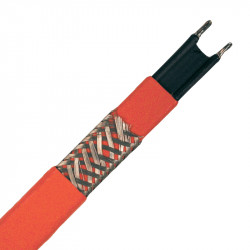
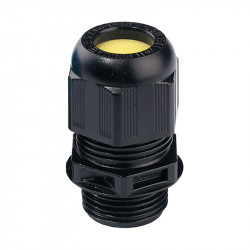
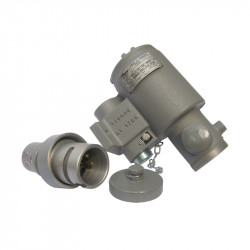
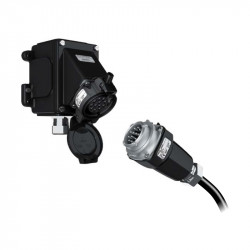
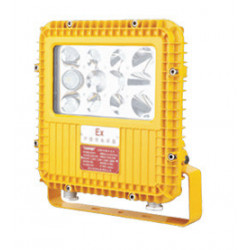


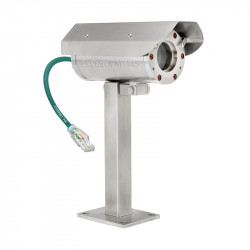
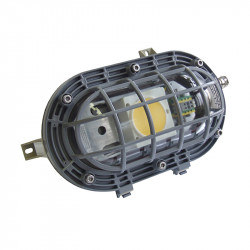
Leave a comment